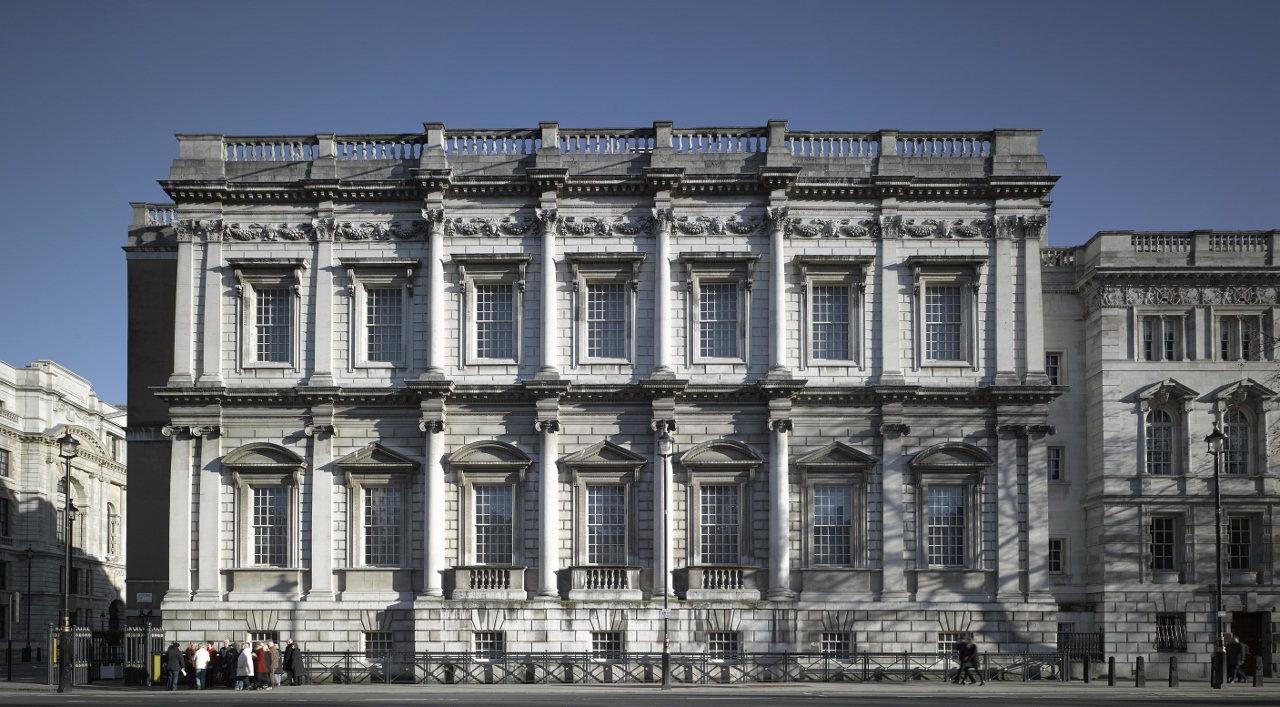The Lost Palace of Whitehall
Chapter 5 : A Modern Banqueting House
As the ‘virgin queen’ never married or had children, Whitehall Palace lacked provisions for lodging a royal family. Thus when the new king, James I, and his family arrived the palace was to undergo fundamental changes. Elizabeth had occupied the king’s lodgings at Whitehall, leaving those intended for the queen empty. Having not been used in years the queen’s apartments were old-fashioned and shabby. They were refurbished for James’s wife, Anne of Denmark. Henry, the Prince of Wales, was given lodgings at St James’s Palace but James was forced to make room in the sports centre of the palace for his other children; one of Henry VIII’s tennis courts was converted into a house for Princess Elizabeth.
Despite efforts to make Whitehall ‘family friendly’, for James the palace was largely a place of business. The king preferred spending his time hunting in one of his many rural retreats, avoiding the hustle and bustle of the metropolis. However, under the Scottish king, Whitehall flourished into a significant centre of drama. Shakespeare and the King’s Men performed at Whitehall almost every season, putting on both old and new performances for the delight of the royal family and court. The first court performances of Othello and King Lear took place in the palace.
During such theatrical performances, the great hall, great chamber and the Elizabethan banqueting house were temporarily fitted up with a stage and seating. One of these buildings however was not up to James and Anne’s standard. Elizabeth I’s canvas banqueting house had been standing for nearly 25 years but the hall’s importance was not reflected in its flimsy appearance. Robert Stickells was consequently commissioned to build a new banqueting house for ambassadorial receptions and a new form of court entertainment - the masque. Masques were elaborate performances that combined theatre, music, dance, and poetry with special effects and magnificent stage props.
Stickell’s building was completed in 1608 and Ben Jonson’s Masque of Beauty was performed there in January. As the interior of the hall was cluttered with pillars and columns, the finished building was not to the king’s satisfaction. The hall was destroyed in a fire in 1619 but James may have seen the disaster as a blessing in disguise. James now had the opportunity to commission a second banqueting house more to his liking.
Inigo Jones, who had travelled widely in Italy and studied the works of Andrea Palladio, was chosen for the assignment. Jones drew inspiration from his travels and in 1619-22 built the Banqueting House, the first building in the country to be completed in the Palladian style. The classical stone structure was quintessentially modern and it stood out in stark contrast to the rest of Whitehall Palace, which was old, irregular and built of brick and timber. Many foreign visitors to Whitehall remarked on the disparity between the Banqueting House and the rest of the palace. Cosimo de Medici’s entourage was thoroughly underwhelmed by the palace and saw only the Banqueting House as worthy of praise:
“The palace of Whitehall, the residence of the king, is more remarkable for its situation, which is on the Thames, and for its connection with the beautiful Park of St James, than for the nobleness of its structure; being nothing more than an assemblage of several houses, badly built, at different times and for different purposes; it has nothing in its exterior from which you could suppose it to be the habitation of the king. All its magnificence is confined to the royal saloon, lately erected according to rules of architecture, and adorned with pillars and other decorations, for the reception and audience of ambassadors, and for the public entertainments which are given there with great splendor at the installation of the Knights of the Garter; and on this account it is called the Banquetting Room”.





